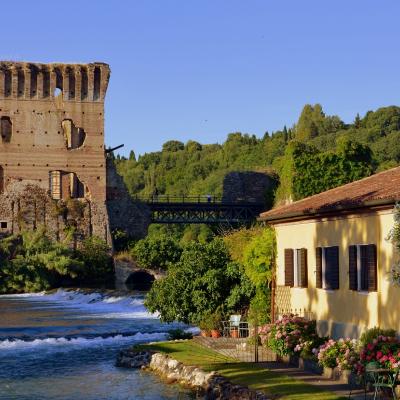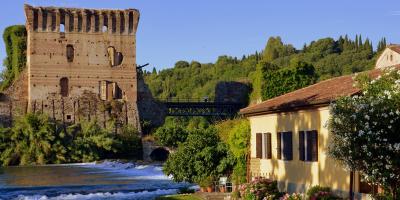Lombardy
Lombardy is a region in northern Italy and the most populated in the nation. The capital city is Milan, it borders Switzerland to the north, Piedmont to the west, Veneto and Trentino-Alto Adige to the east, and Emilia-Romagna to the south.
The territory at the orographic level presents plains and mountains equally. Hills make up about 12 percent of the region.
There are many rivers that flow through Lombardy, including the Po River, Italy's largest waterway, the Adda (which flows entirely through this Region), the Ticino, and the Mincio. There are many lakes, both natural and artificial.
Just along the pre-alpine belt are Lake Garda, Lake Maggiore, and Lake Como, among the largest lakes in Italy. Also important are Lakes Iseo, Mantova, and Ceresio.
Of historical, tourist and commercial interest, one cannot fail to mention the national passes such as the Stelvio Pass (2759 mt) and the Tonale Pass (1883 mt), which connect Lombardy with Trentino-Alto Adige.
The climate of Lombardy is temperate sub-continental, although not the same in all areas of the region, due to the presence of mountains, hills, lakes and plains.
We go from the muggy plains, including the famous Po Valley, due to a lot of humidity, and hot in summer, and cold and foggy in winter, to the mountains where the climate is typically alpine (cool summers and long, harsh winters).
Around the large lakes, the microclimate is Mediterranean: for example, inside aI Lake Garda olive trees are grown for the production of "Lombard oil".
Large cities, producing heat, have raised the temperature, creating the so-called "heat islands". In the mountains of the area to the north, the climate is decidedly cold.
Tourism
It is important to mention that Lombardy was the first region to introduce innovative concepts for land protection, with the creation of river parks (The Ticino Valley Nature Park was the first in Europe in 1974), agricultural parks, and local parks covering about 30 percent of the territory. This has led to the creation of about 120 areas dedicated to nature, including the Stelvio National Park. An excellent calling card for Lombardy, which also welcomes tourists in the name of nature.
What can you visit in Lombardy, the region that produces about 20 percent of the national GDP? Definitely the pre-alpine lakes with patrician villas, vegetable gardens, terraces and ancient villages. The villas in the Comasco area, home to international personalities from all walks of life.
The Valtellina, the cities and towns that embody the historical spirit from the Middle Ages to the Renaissance. The city of Milan with its Navigli, Duomo, artistic works, its worldliness and modernity, Varese, Brescia. Don't miss the Pinacoteca di Brera, Leonardo da Vinci's Last Supper in Milan, the Sirmione Archaeological Museum with the Catullus Caves, the Scaliger Castle and Villa Carlotta.
In Lombardy there are as many as ten places that have become UNESCO World Heritage Sites: the rock engravings of Val Camonica, the Dominican Church and Convent of Santa Maria delle Grazie with Leonardo da Vinci's "The Last Supper" (Milan), the Crespi d'Adda, the Sacred Mountains of Piedmont and Lombardy, the Sacro Monte del Rosario in Varese, the Sacro Monte della Beata Vergine del Soccorso in Ossuccio, Mount San Giorgio, Mantua and Sabbioneta, the Rhaetian Railway in the Albula and Bernina landscape, the power places of the Lombards, Brescia.


